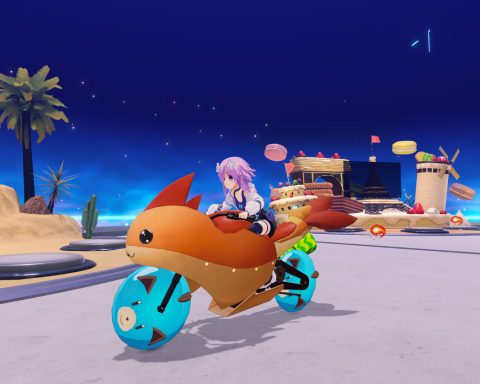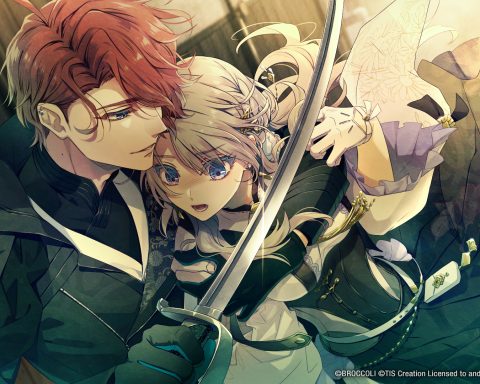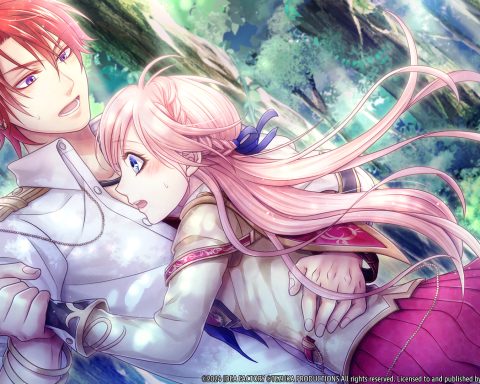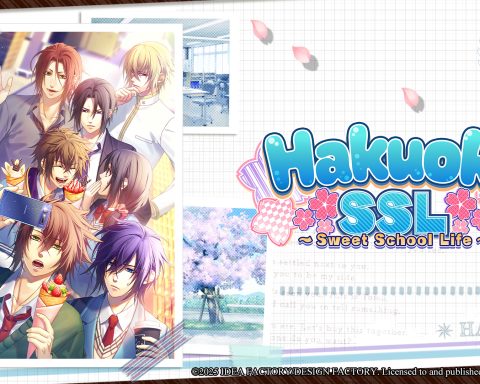 A few weeks back developer Image & Form released a rather spectacular little platformer on the 3DS eShop. SteamWorld Dig is a hugely creative and charming game, and promises some great things for the SteamWorld franchise into the future.
A few weeks back developer Image & Form released a rather spectacular little platformer on the 3DS eShop. SteamWorld Dig is a hugely creative and charming game, and promises some great things for the SteamWorld franchise into the future.
While Image & Form doesn’t restrict itself to Nintendo platforms, it does have a clear preference towards such hardware. It’s produced iOS games, but sold a part of its business to the company that has acted as the distributor for Nintendo products throughout Scandinavia for the past 30 years.
The studio’s CEO, Brjann Sigurgeirsson, took the time out to have a chat with Matt S about the SteamWorld series, working on Nintendo platforms and why it is so hard to be a genuine indie developer.
And chess. Sigurgeirsson has a love for chess, and we’re calling it now – the next SteamWorld game will surely be a strategy title.
Enjoy the full interview below:
Digitally Downloaded (DD): What inspired the SteamWorld series?
Brjann Sigurgeirsson (BS): There are a number of titles that have served as inspiration for SteamWorld Dig. I guess we live in times where it’s hard to think up something truly original – maybe you could liken it to the reality of a chef: you very rarely find new, previously undiscovered ingredients, but there are always new ways to mix them. So the ingredients for SteamWorld Dig are the following (and probably a lot more): Metroid, Castlevania, Dig Dug, Minecraft, Terraria… but in a very own format, and with only the best pieces from each of those games.
But the biggest inspirations for making SteamWorld Dig were two things: the first was necessity – as a self-doubting iOS developer, we needed to see if we could be successful on a non-mobile platform, and the second was the mystery of SteamWorld.
You see, SteamWorld Dig has a spiritual predecessor called SteamWorld Tower Defense, which we released on the Nintendo DSiWare Store back in 2010. It’s actually still available! It went largely unnoticed at the time, but IGN picked it up and decided it was “Great”. I think that in itself, that we could make a good game for the Nintendo DS (and thus surely the 3DS) plus the fact that SWTD paid for itself in spite of being only sold on that awful marketplace, gave us the confidence to go back to Nintendo.
When we made SteamWorld Tower Defense, it was sort of an offhand decision to let the humans be the greedy villains and the robots be the hardworking, honest good guys. When we were done with the game, we’d spend lunch breaks discussing how this alternative future had come about. And then we expanded on the universe. So we had a very interesting background story on how everything came about, and were dying to tell it. At one point, in one version, we were actually telling most of the story in SteamWorld Dig. Then we decided to scale back the story element, so that we can portion it out in coming SteamWorld games.
And finally, there is something very gratifying about digging – you never know what you’ll find, or what lies beneath the next layer. It’s truly fascinating. It’s so fascinating that I secretly want to take my wife on a metal detection vacation. I’ll operate the detector, and she’ll operate the shovel. Just as secretly, she doesn’t want to come.
DD: What do you find attractive about SteamPunk settings, and where would you like to take SteamWorld going forwards?
BS: Well, we really wanted to mix steampunk and Western themes, because we simply thought it should work! The movie Wild Wild West (1999) set out to do it and didn’t succeed, but steampunk and Western were hardly at fault for its failure. And since we already had this mix in SteamWorld Tower Defense, we couldn’t really change it.
Having robots in a turn-of-the-century setting is a wonderful thought. They MUST be steam-driven, since there is no other power source available. I think the mix itself is interesting, but our graphic artists (led by the His Eminence Tobias Nilsson) have turned up the heat in SteamWorld Dig, and have set a new standard for 2D platforming games. Graphically, everything is vibrant and “correct”: there is no inherent discord between steampunk and Western style. Logically, they should have been present at the same time in history – if steampunk had been a term at the time.
We are very likely to keep the style for games to come – the setting, vibe and story will continue through the SteamWorld series.
DD: Why did you go from Tower Defence to a puzzle platformer? Are there any other genres you’d like to work with?
BS: If there’s one thing we’re not afraid of, it’s going from one genre to another. SteamWorld Tower Defense was – yes – a tower defense game, whereas our iOS hit Anthill is a mix between castle defense, real-time strategy and line drawing. Spin Demon is a crazy sort of casual physics gameplay, and the next game in the SteamWorld series will be something quite different from SteamWorld Dig.
The mortar holding the SteamWorld games together is the background story – not the gameplay itself – and that gives us an exciting amount of freedom. Everyone would be very surprised if the next version of, say, Battlefield turned out to be a dungeon crawler. It’s not going to happen. But we have that freedom, we can do what we like as long as we stay financially sound and afloat. We’re hard to pin down, and we like it that way. We want people to speculate what Image & Form will do next.
You’d think that you should stay within a genre once you got the hang of it, but we really want to prove – as much to ourselves as to others – that we can take any game idea and turn it into a great game.
DD: To date you’ve been primarily supportive of Nintendo’s handhelds. What has attracted you to that hardware?
BS: We’ve actually been on a few platforms now – first PC/Mac with children’s games, then iOS with a number of different titles such as the award-winning Anthill, and now we’ve made the second title for a Nintendo handheld, on our second Nintendo system.
It is obviously not the performance of the graphics engine or the CPU that made us go back” to the 3DS – rather, we think SteamWorld Dig would be a perfect fit for the unit. The controls are very much that of a classic console, it would have been very hard to make SteamWorld Dig fit touch-screen-only devices.

BS: Honestly, we haven’t decided where to take the series next. The Wii U is a powerful, inventive and under-appreciated console. We’re discussing a lot of options for the SteamWorld series at the office. That said, Nintendo has been nothing short of fantastic towards us. A lot of things would have to go very wrong if we decided not to work with them also in the future.
DD: A lot’s been said about the rise of mobile gaming, and certainly your games would play well on iOS as well – what are your thoughts on mobile and its competition to traditional gaming devices?
BS: I have a lot of thoughts on it! Coming from iOS, we have seen both the great things there and the difficulties you may face. Mobile and traditional gaming devices are the opposite of each other in many ways. For one, the audiences are very different. Mobile users are not a homogenous group – you cannot really cater to everyone there, whereas gamers prefer traditional platforms. It’s easier to communicate to the same sort of people, and they are easier to reach – they read up on the games that are coming out for their platform, and are pickier about what they choose to play. They have to be, since they are paying quite a bit more for their games.
Second, it’s very much easier to become a developer/publisher and submit your games for publishing on mobile platforms. I think the mobile platforms have been a great starting point for many developers.
But at the same time, it’s very hard to get your game across on mobile, given the extreme congestion there. You are literally talking of 15 minutes of fame. It’s also hard to make money, since your game is likely to fly under most people’s radar. That’s the big shift we are seeing now – small developers want to continue making games, but it’s increasingly difficult to make a living from making mobile games. And so they turn to other platforms – where the platform owners are finally ready and eager to greet them.
DD: What are some of the greatest challenges that you’d faced as an independent developer?
BS: We are in a unique spot: towards the end of 2011, I sold a part of Image & Form to an amazing company called Bergsala, which indicentally is tantamount to Nintendo Scandinavia – Bergsala has handled all sales of Nintendo games and hardware in the Scandinavian region for more than 30 years now. Since Bergsala has an interest in us, they’re not inclined to seeing us do work for hire for other publishers or going broke, so they finance us when we run low on cash – which has been very much the case of SteamWorld Dig.
I’m not advertising here, but the people at Bergsala are simply amazing and have a lot of faith in us. They’re as interested in throwing money down the drain as the next company (that is to say, not at all), but when they saw SteamWorld Dig progress over the months they just asked us to neither under- or overdo it. Ironically, we were bought when we were a mobile-only developer, so that they had some “tentacles in the future”. And then we went back to Nintendo!
Before, when I was the sole owner, it was tougher and more like regular indie development. That entails a lot of compromising with publishers, begging, promises, arrested development, postponed ideas and economic hardships. What you always wish for is a buffer, so that you can go all the way – your very own way – with your game ideas. We have been fortunate, and are as I mentioned in a unique spot. I hope for all talented indie developers to find the type of peace and quiet needed to develop great games. There are good publishers, and a good developer should NOT have to haggle with cheap, suspicious, ignorant publishers. Life’s just too short, and you can only develop so many games.
So, a very short answer: indie development can be true hell, with dependencies that put quotation marks around the word “indie”. But it can also be wonderful.
DD: What are some of your next priorities, as a business?
To make sure that we recoup all our development costs from SteamWorld Dig. It’s a very polished, very thought-through game. And such games don’t come cheap!
DD: Which game developers inspire you the most, and why?
BS: Any developer who doesn’t make a me-too product, but can think up something original – and good, of course. I’m less impressed with AAA titles, of which many are fantastic in their own respects, than with small indie gems – I know the enormous burden and the variety of responsibilities that rest upon every member of a small team, who must keep a lot of different things in check. The scale of individual financial risk is only one of the things that separates a small developer from a triple-A studio. Small studios go all in and live their dream, whereas many people at a big studio go to their day job.
DD: Finally, what games are you playing at the moment?
BS: I play chess every day. Boring answer, huh? But chess is the finest game in the world. The rules are simple and the possibilities are endless. There is no luck, no dice, no one strategy, no dealt cards, no slipping on buttons that makes that crucial difference. It’s just one mind pitted against another, and the best mind wins. It can’t get any simpler or any more beautiful than that.
– Matt S
Editor-in-Chief
Find me on Twitter: @DigitallyDownld






